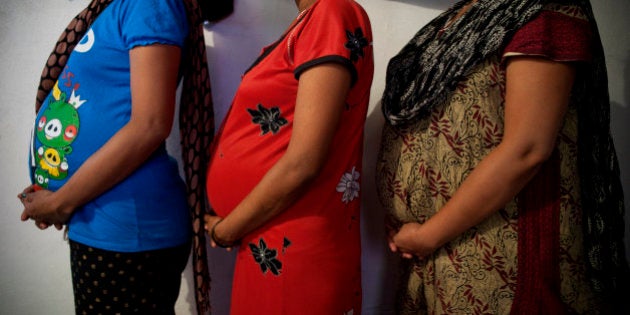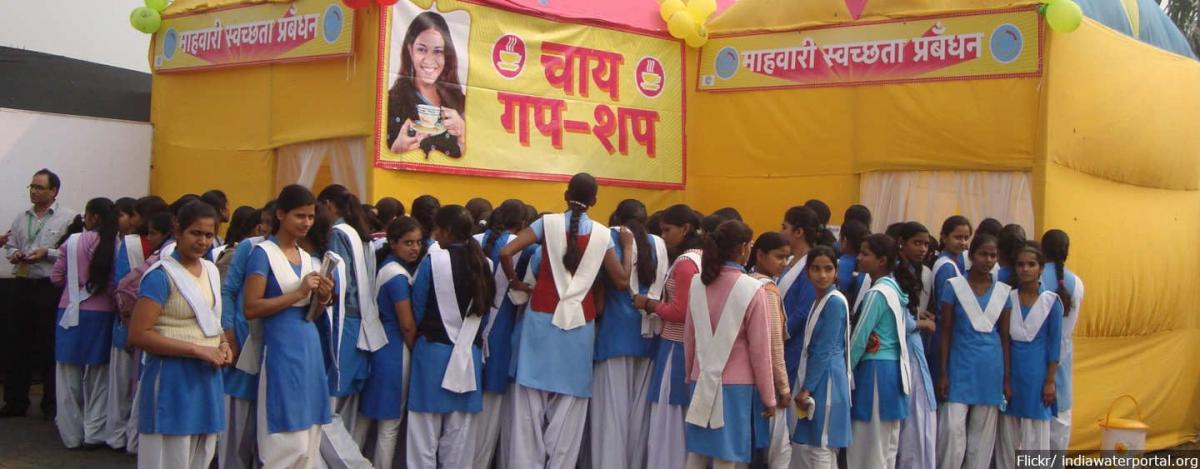Recently, due to the outbreak of COVID-19, around 15 lakh children have lost their parents or guardians globally. These children are also at an increased risk of diseases, physical abuse, sexual violence, and adolescent pregnancies. Adolescent fertility is now emerging as one of the most serious health threats from which adolescents, especially girls suffer.
On average, 16 million adolescent girls give birth each year, which constitutes approximately 11% of all births globally. Due to the high prevalence of child marriage in India, most adolescent pregnancies occur within the sacrosanct bond of marriage. The age of 15-19 years is usually termed as ‘adolescence’. It is defined as a period of transition from childhood to adulthood.
Adolescent fertility rate is defined as the number of births per 1,000 girls aged 15 to 19. Having children this early in life exposes adolescent girls to unnecessary risks
Adolescence pregnancy can also be termed as motherhood in childhood. The significant factors causing pregnancy among young girls includes early marriage, illiteracy, lack of socio-economic infrastructure, lack of adequate health facilities, poor awareness, lack of acceptability & use of contraceptives, and deficiency in prenatal care. It is a multifaceted problem that exists in both developed & developing countries and affects the society at large. Young girls who are sexually active at an early age are quite unlikely to use contraception. It may be due to a lack of knowledge and information about contraception or the moral restrictions behind it.

Health complications, societal sanctions
The present adolescent mortality rates in the age groups of 15-19 years can be attributed to early marriages and health complications, especially during pregnancy and childbirth. Along with this, gender discrimination also prevents effective responses to the health needs of young girls. Today, adolescent fertility constitutes more than half of India’s total fertility, and many of them suffer from poverty.
As per the reports, the complications resulting from pregnancy and childbirth are among one of the leading causes of death in adolescent girls. Thus, adolescent pregnancy is a serious health threat to women in India. It also leads to sexually transmitted diseases, mental disorders, pregnancy-induced hypertension and anemia, along with a high rate of neonatal mortality.
The Medical Termination of Pregnancy (Amendment) Act, 2021 was passed to account for the changes in the social and technological avenues after the passing of the original Act in 1971. It brought some major changes including the increase of gestation period from 20 weeks to 24 weeks

Most of them aren’t ready either physically or psychologically for pregnancy or childbirth, so this reproductive process often results in damaging their health. Adolescent pregnancies may lead to abortions which in turn can result in serious maternal complications, and may even lead to pelvic inflammatory disease and subsequent infertility. Apart from that, it can lead to birth injuries to the child, or abnormal childbirth.
The constitution guarantees fundamental rights that protect the personhood and mental well being of all citizens, including adolescent girls. There are several laws that protect the emotional and bodily integrity of young girls. But many of these legal rights are violated due to socio-cultural sanctions. They are coerced to face discrimination and adhere to assigned gender stereotypes.
Also read: What Contributes To Teenage Pregnancies In India?
Laws regulating adolescent fertility in India
Before 1971, abortion was an offense under Sections 312 to 316 of the Indian Penal Code, except in the case when there is danger to the life of the pregnant woman, which led to an increase in cases of illegal abortions. Consequently, the Medical Termination of Pregnancy Act,(MTP) 1971 was passed which made abortion legal in India. The main reason for the introduction of abortion laws in India was to control the growing population rather than for the protection of the rights of women.
Section 3(4) of the MTP Act, provides that a minor girl can abort her pregnancy but with the consent of her legal guardian i.e., father/husband (after marriage). According to this Act, the termination of pregnancy could be initiated at the discretion of a medical practitioner within 20 weeks of gestation period under certain conditions:
• When the continuation of pregnancy threatens the life of a pregnant woman or may cause injury to her physical or mental health;
• When there is a risk that the child would be seriously handicapped when it is born due to physical and mental abnormalities;
• When pregnancy is caused due to rape;
• When pregnancy is caused due to failure of any contraceptive methods used by a Married woman or her husband.

The Medical Termination of Pregnancy (Amendment) Act, 2021 was passed to account for the changes in the social and technological avenues after the passing of the original Act in 1971. It brought some major changes including the increase of gestation period from 20 weeks to 24 weeks.
In the provision regarding failure of contraceptive methods, the phrase ‘married woman or her husband’ has been replaced by ‘woman or her partner’, so that unmarried women and teenage girls can also have access to abortions in case of an unwanted pregnancy. This law provides women reproductive rights to some extent, but still, there is no provision for an unconditional pregnancy or related abortion
In India, marriages between 15 and 18 years of age are voidable, which means when a woman attains majority, she has the right to nullify the marriage. Now, the female age for consent has been increased to 18, yet, there is no change in the consenting age for married, minor girls. The Prohibition of Child Marriage Act, 2006 provides the right to give consent to women above the age of 16 years, but in case of an unwanted pregnancy, she does not have the right to have an abortion without the consent of her legal guardian.
Current scenario
The adolescent fertility rate has fallen significantly in India since 2004. The North Eastern States have the highest adolescent fertility except Nagaland. While, the states of West Bengal and Tripura record more than 80 births per 1000 women aged 15 to 19, Assam & Bihar report 60 to 80 births. Himachal Pradesh, Jammu & Kashmir, and Ladakh record less than 23 births per 1000 women aged 15-19 and the central states like Maharashtra and South Indian states have 40-60 births per 1000 woman aged 15-19. In Kerala, 18 births per 1000 have been recorded.
The highest decline occurred in Nagaland and Telangana. In Nagaland, the adolescent fertility rate declined from 42 to 19 births per 1000 women aged 15 to 19 and in Telangana, it reached 48 from 67 births per 1000 woman aged 15-19.
To intervene constructively in the issue and further facilitate changes, awareness about women and child rights should be increased and there should be focus on the education of young girls, rather than advocating them being pushed into household duties and marriage. Awareness campaigns about the knowledge and use of contraceptives, and its benefits must be strengthened

Moreover, in 16 countries including India, the contribution of the birth rate of adolescents aged 18-19 was more than 75 percent. Also, the proportion of adolescents among women in the reproductive age group (15-49 years) decreased between 1990-1995 and 2015-2020.
There are many reasons for this speedy rate of decline in adolescent fertility. Some of them include the increasing access to modern contraceptive methods, the introduction of abortion laws, poverty reduction, and improvement in income inequality. However, the social norms such as early marriage, pro-fertility norms, and toxic masculine ideologies still remain a problem.
Addressing the problem: Way ahead
Time and again, various rights which are constituted for the protection of women and girls are violated. One of the reasons for this may be the backward positioning of women in a patriarchal society. But today, a lot of those differences are torn off, and we are working for the development of women and their rights. The rights of adolescents to choose, to make their own decisions, to have the right to good health and education and the like are being increasingly recognised.
The age of women is an extremely important factor that affects their fertility levels. After analysing data it can be surely said that, today there is a decline in the adolescent fertility rates as compared to the past few years due to several reasons, but still a lot is yet to be achieved.

To intervene constructively in the issue and further facilitate changes, awareness about women and child rights should be increased and there should be focus on the education of young girls, rather than advocating them being pushed into household duties and marriage. Awareness campaigns about the knowledge and use of contraceptives, and its benefits must be strengthened.
Most importantly sex education in schools and rural areas must be conducted. Doctors and researchers suggest that postponement of the first pregnancy must be encouraged for adolescents. It may lead to long-term health benefits and may contribute to the economy of the country.
According to the report of the United Nations, India is expected to have the biggest national rise of adolescent girls, up to 95 million by 2030. Therefore, we need to undertake imperative measures to regulate teenage pregnancies, in order to control the maternal and infant mortality rates and fortify overall adolescent health.
Also read: Abortion Amid Lockdown: How Can The State Take Responsibility?
Bhakti Rathi is a third year student of the NMIMS Kirit P. Mehta School of Law, Mumbai pursuing BA.LLB (Hons.). She wants to pursue a career in corporate law, and is inclined towards gender related issues and women empowerment. You may find her on LinkedIn and Instagram.
Ayush is a third year student of the Dharmashastra National Law University Jabalpur pursuing BA.LLB (Hons.). He has a keen interest in writing on issues concerning empowerment of women. You may find him on LinkedIn and Instagram.
Featured Image Source: Sabrang




